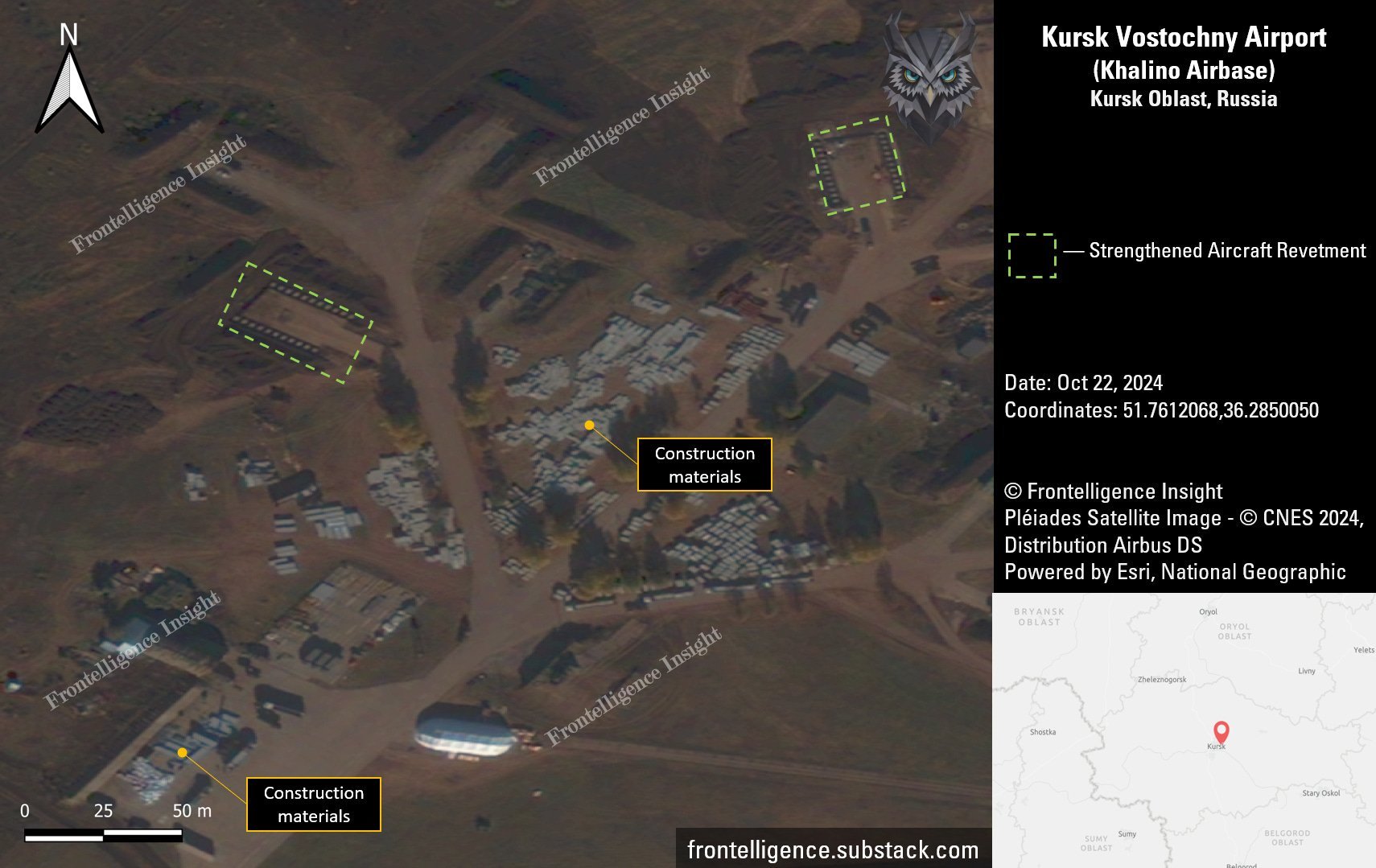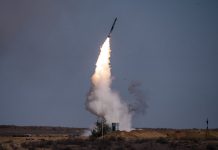On November 25, Ukraine, for the first time, reportedly attacked a military airfield in Russia using the US-supplied Army Tactical Missile System (ATACMS).
The targeted airfield, identified as Khalino, is located approximately 96 Kilometers (60 miles) from the Russian border. Footage shared on social media showed dramatic explosions caused by submunitions from an ATACMS cluster variant, reportedly hitting the airfield.
Ukrainian missile forces struck the site with American-supplied missiles as part of a broader effort to retain control over territory captured in Ukraine’s August offensive.
For months, Ukraine had requested permission to use long-range weapons like the ATACMS to counter Russian air attacks in regions like Donetsk and Kharkiv.
However, Western allies had been hesitant, fearing that allowing such strikes would escalate the conflict further. This restriction was lifted on November 17 when US President Joe Biden approved Ukraine’s use of long-range missiles on Russian soil.

Two days later, Ukraine used the ATACMS for the first time, hitting a munitions storage facility near Karachev, about 70 miles from the border. The ATACMS system can strike targets up to 190 miles away, depending on the variant used.
On the night of November 25, Ukrainian forces again targeted Russian military infrastructure, this time focusing on the Khalino airfield.
Images from the “Cyberflour” project, a volunteer initiative, showed submunition detonating at the airfield. Analysts indicated that the explosions likely impacted areas near where combat aircraft were parked, though it remains unclear whether any aircraft were present at the time of the strike.
Russian military bloggers, including pro-Kremlin figure Ilya Tumanov, confirmed the missile attack, noting that the airfield’s defenses intercepted seven of the eight missiles launched. Tumanov described this interception as an attempt to down the missiles, not a successful defense.
Russian reports also stated that the missile strike caused injuries to two Russian soldiers and damaged a private house in the surrounding area.
Despite Russia’s claims that most of the missiles were intercepted, social media images suggest that at least two of the ATACMS missiles successfully reached their target. Targeting airfields in the strike could be part of Ukraine’s strategy to disrupt Russian aviation activities.
The attack on Khalino took place a day after Ukraine reportedly used ATACMS to strike a Russian S-400 air defense system. Photos of the destroyed Russian S-400 92N6 radar have also appeared online.

The General Staff of the Armed Forces of Ukraine has claimed that the strike on the Russian S-400 system occurred on November 24, 2024, in the territory of the village of Velyke Zhyrovo, located in the Kursk region.
According to the General Staff, the destroyed S-400 system belonged to the 1490th Guards Anti-Aircraft Rocket Regiment, which is under the command of the 6th Army of the Russian Federation Armed Forces.
Although the S-400 system was not operational and was undergoing repairs, the strike allegedly obliterated a 92N6E radar and two launchers.
The Ukrainian source further claimed that five Russian officers and three Almaz-Antey employees were killed in the attack, with two transporter erector launchers (TELs) also destroyed.
The Attack On Khalino Airfield
Khalino Airfield, which has been a key site for initial Russian military operations, was first targeted by Ukraine in December 2022 in a drone attack. At that time, the airfield served as a key base for the Russian Aerospace Forces, housing the 14th Guards Fighter Aviation Regiment.
This regiment operated two squadrons of Su-30SM Flanker-H fighter jets with a fleet of 24 aircraft. Khalino was targeted again on August 14, 2023, in what was dubbed “the largest attack on airfields in the war.”
Subsequent reports indicated that Russian aircraft had been relocated beyond the range of the ATACMS missiles. However, it remains uncertain whether any aircraft were actually stationed at the airfield during the latest strike.
Analysts have identified approximate impact zones near the aircraft equipment parking areas at the Khalino airfield, which seem to be located close to where combat aircraft are typically stationed.
An open-source intelligence (OSINT) expert, known by the username @Tatarigami_UA on X (formerly Twitter), shared valuable insights based on prior data collected. He observed that the airfield has primarily been used to house Su-25 close air support jets, helicopters, and UAVs in recent months.
The analyst said, “For some time, the airfield hasn’t been heavily utilized by Russia in the same way as other air bases. Instead, it has primarily hosted helicopters and Su-25 for close-air support, rather than for KAB deployments like those conducted from bases in Voronezh or Lipetsk.”
Tatarigami_UA also pointed out that the level of activity at Khalino had decreased significantly in the days before the strike. This reduction in operational use makes it uncertain whether a large number of aircraft were affected by the attack.
He speculated that the strikes likely targeted critical infrastructure, such as supply depots, air defense systems, and radar installations, potentially rendering the airfield temporarily inoperable.
Since early October, Russian forces have been strengthening the defenses at Khalino airfield by constructing new revetments and reinforcing existing ones with concrete blocks.

This development suggests that Khalino will continue to play an important role in Russia’s military strategy, making it a key target for Ukraine’s ongoing efforts to degrade Russian capabilities in the region.
By the time of the November 25 attack, the construction was still in progress, though it seemed to be in the later stages of completion. He also noted that if Ukrainian forces successfully neutralized air defense systems in the region, it could open up opportunities for future strikes using more cost-effective drones.
The expert also stressed that, despite Moscow’s threats and nuclear saber-rattling in the form of psychological operations (PsyOps), Ukraine is likely to continue using ATACMS and Storm Shadow/SCALP missiles to target military infrastructure within Russian territory, as these threats from Russia are largely aimed at sowing fear of nuclear escalation and weakening international support for Ukraine.
- Contact the author at ashishmichel(at)gmail.com
- Follow EurAsian Times on Google News




